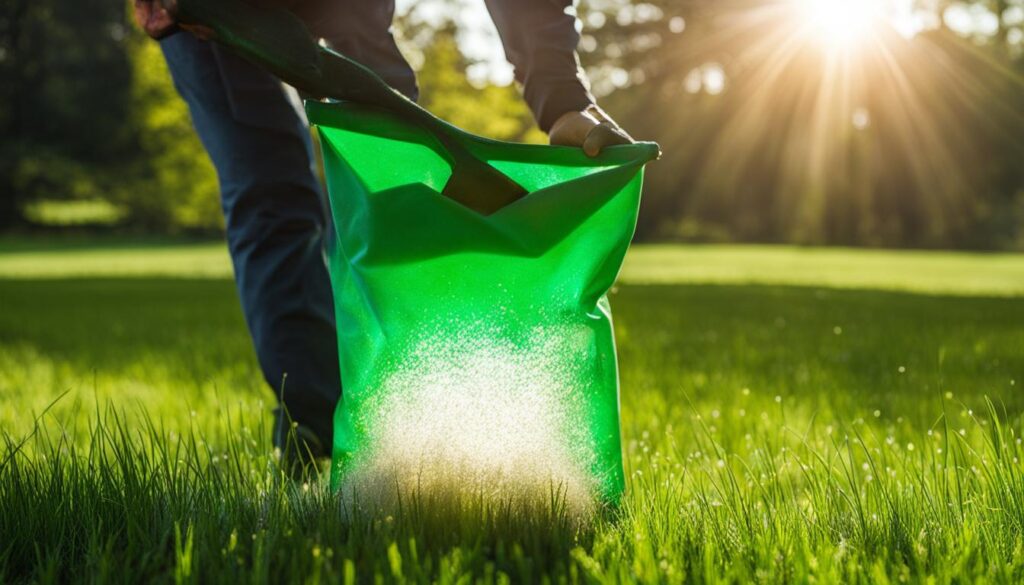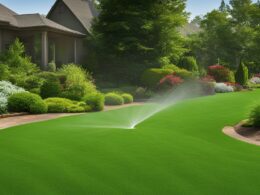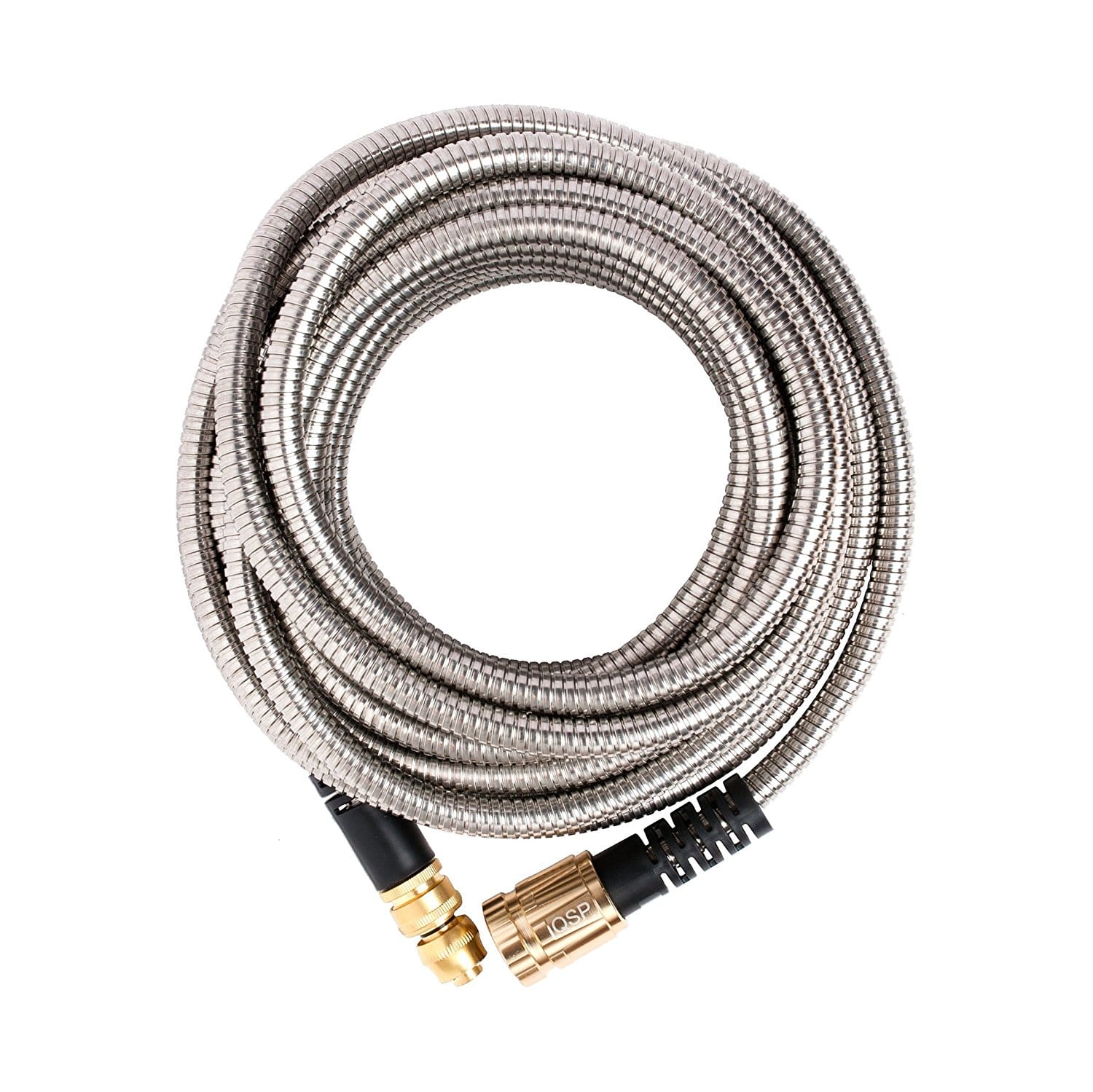Welcome to your guide on how to cultivate warm season grass and achieve a vibrant green lawn. If you live in the southern or middle regions of the United States and are looking for a lawn that thrives in warm summers and mild winters, warm season grass is the perfect choice for you. This type of grass has a growing season from late spring to early fall, making it ideal for creating a lush, green oasis in your yard.
But how can you ensure that your warm season grass flourishes and stands out from the rest? In this article, we will explore the key steps to successfully grow and maintain your warm season grass. From selecting the right grass type to proper planting techniques, mowing, watering, fertilizing, and seasonal care, we’ve got you covered.
By following our expert advice and implementing these essential practices, you’ll be on your way to achieving a vibrant, green lawn that will be the envy of your neighborhood. So let’s dive in and discover how you can cultivate lush warm season grass and transform your yard into a stunning outdoor retreat!
Choosing the Right Grass Type
When it comes to cultivating a lush, vibrant green lawn, choosing the right warm-season grass type is essential. Consider factors such as shade tolerance, water requirements, and maintenance level to make the best selection for your yard. It’s important to differentiate between warm-season turfgrass and warm-season native grasses, as they have different care needs.
Warm-season turfgrass, such as Bahiagrass, Bermudagrass, Buffalograss, Carpetgrass, Centipedegrass, St. Augustinegrass, and Zoysiagrass, is commonly used for lawns. These grasses thrive in warm climates, especially in the southern and middle regions of the United States.
On the other hand, warm-season native grasses are typically found in prairies and natural habitats. Examples include Indian grass, big bluestem, little bluestem, switchgrass, and sideoats grama. These native grasses offer ecological benefits, but they may require different care and maintenance compared to warm-season turfgrass.
To achieve a lush, green lawn, select a warm-season turfgrass type that suits your climate, shade conditions, and maintenance preferences. Consider consulting with a local lawn expert or nursery to guide you in the grass type selection process.
Planting Warm-Season Grass
When it comes to establishing a beautiful warm-season lawn, there are several planting methods to consider: seeding, sodding, and hydroseeding. Each method offers unique benefits and considerations, allowing you to choose the option that best suits your needs and budget.
Seeding: Seeding warm-season grass is a cost-effective solution, particularly suitable for DIY enthusiasts. Late spring or early summer is the optimal time to plant warm-season grass seeds, as the soil temperature is ideal for germination. By following proper soil preparation techniques and providing adequate watering, you can achieve successful results with seeding.
Sodding: If you desire instant results and don’t mind investing a bit more, sodding is a great choice. With sod, you can enjoy an instantly lush and established lawn. This method involves laying down strips of mature grass, ensuring proper soil preparation beforehand. Sodding is particularly convenient if you have specific time constraints or want to avoid the waiting period associated with seed germination.
Hydroseeding: Hydroseeding is a recommended option for larger properties and slopes. It involves spraying a mixture of grass seed, fertilizer, water, and stabilizers onto the soil. This method promotes uniform coverage and the rapid germination of seeds. Hydroseeding provides excellent erosion control and is often used for revegetation projects.
Regardless of the planting method you choose, it’s crucial to follow the specific instructions and guidelines for each approach. Take into account factors such as your budget, available time, desired timeline for a established lawn, and the specific requirements of your property. By selecting the right planting method and providing proper care and maintenance, you are on your way to cultivating a vibrant and flourishing warm-season grass lawn.
Proper Mowing Techniques
Proper mowing techniques are crucial for maintaining a healthy warm-season lawn. To ensure the best results, it’s important to pay attention to warm-season grass mowing. Here are some essential tips to incorporate into your mowing routine:
- Mowing Height: Each warm-season grass type has a specific recommended mowing height. It’s crucial to follow these guidelines to prevent damage to the grass. Whether it’s Bermuda grass, Zoysia grass, or St. Augustine grass, knowing the right mowing height will help keep your lawn lush and vibrant.
- One-Third Rule: To maintain healthy growth, always remember the one-third rule of mowing. Never remove more than one-third of the grass blade in a single mow. By adhering to this rule, you prevent stress and ensure the grass can recover quickly.
- Grasscycling: Consider embracing grasscycling, which involves leaving grass clippings on the lawn after mowing. These clippings can provide valuable nutrients to the grass, reducing the need for excessive fertilizer use by up to 25%. It’s an eco-friendly practice that benefits both your lawn and the environment.
- Sharp Blades: Using sharp blades when mowing is essential for achieving a clean cut. Dull blades can tear or shred the grass, leading to a ragged appearance and potential lawn diseases. Regularly sharpen your mower blades to ensure they cut smoothly and efficiently.
- Mowing Patterns: Alternating mowing patterns is not just for aesthetics—it also helps prevent soil compaction. By changing the direction each time you mow, you distribute the weight of the mower more evenly and reduce the risk of compaction. Plus, this practice promotes a uniform appearance across your lawn.
By implementing these proper mowing techniques, you’ll give your warm-season grass the care it needs to thrive and maintain its vibrant green color. Now, let’s move on to the next aspect of a healthy lawn: watering and fertilizing.
Lawn Maintenance – Watering and Fertilizing
Proper watering and fertilizing are essential for maintaining a lush warm-season lawn. To ensure healthy growth, it’s important to follow the best practices for warm-season grass watering and fertilization.
Deep and Infrequent Irrigation
Deep and infrequent irrigation is key to promoting deep root growth and making warm-season grass more drought-resistant. Aim to provide around 1 inch of water per week, allowing the water to penetrate deeply into the soil. This encourages the roots to grow deeper, resulting in a stronger and healthier lawn.
For deep watering, it’s recommended to water early in the morning. This allows the grass to dry before nightfall, preventing issues such as fungal diseases.
Fertilizing Warm-Season Grass
Fertilizing warm-season grass plays a vital role in maintaining its health and vibrancy. The timing and amount of fertilizer application depend on the specific grass type and regional recommendations.
Typically, warm-season grasses benefit from fertilizer applications in late spring through early fall, when they are actively growing. It’s important to choose a high-quality fertilizer that is specifically formulated for warm-season grasses.
When applying fertilizer, consider the specific needs of your lawn and follow the recommended application rates. Over-fertilization can lead to excessive growth and increased susceptibility to pests and diseases.
By following these watering and fertilizing practices, you can maintain a lush warm-season lawn that is both beautiful and resilient.
Seasonal Lawn Care Tips
Proper care is essential for maintaining a healthy and vibrant warm-season lawn throughout the year. Each season presents unique challenges and opportunities to enhance the beauty of your lawn. By following these seasonal lawn care tips, you can ensure that your warm-season grass thrives and remains green and lush.
Spring Lawn Care
In the spring, it’s important to kickstart your warm-season lawn care routine. Start by cleaning up any debris that has accumulated over the winter, such as fallen leaves or branches. This will help the grass receive adequate sunlight and air circulation. Mowing at the correct height is crucial during this time. For warm-season grass, aim to mow at a height of 2-3 inches, ensuring that you do not remove more than one-third of the grass blade in a single mow. After mowing, applying a balanced fertilizer will provide the necessary nutrients for healthy growth. Additionally, treating weeds early in the season will prevent them from taking over your lawn.
Summer Lawn Care
The hot summer months require special attention to keep your warm-season grass thriving. Mowing your lawn at a higher height, around 3-4 inches, helps create shade for the soil, reducing water evaporation and weed growth. If you notice signs of grub activity, treat your lawn accordingly. Proper watering is crucial during this season. Deep, infrequent irrigation is recommended, providing around 1 inch of water per week. To prevent water loss due to evaporation, water your lawn early in the morning. Applying a summer-specific fertilizer will provide the necessary nutrients to withstand the high temperatures.
Fall Lawn Care
Fall is a critical time for preparing your warm-season lawn for the winter months and ensuring a lush lawn next spring. Fertilizing your lawn in the fall promotes root development and prepares the grass for the dormant period. Consider overseeding if your lawn has thin areas or bare spots. This will help fill in any gaps and ensure a thick and healthy lawn. When the leaves start to fall, mulching them into your lawn can provide additional nutrients and reduce waste.
Winter Lawn Care
Although warm-season grasses go dormant in the winter, there are still important steps to take to maintain your lawn’s health. Reduce foot traffic on the lawn as much as possible to prevent compaction and damage to the dormant grass. Use a lawn-friendly ice melt to prevent ice buildup on walkways without harming the grass. Winter is also a great time to plan for the upcoming year’s lawn care. Consider any changes or improvements you want to make and start researching new techniques or products that can benefit your lawn.
To achieve a beautiful, healthy warm-season lawn, it’s essential to adjust your care routine according to the changing seasons. By following these seasonal lawn care tips, you can ensure that your warm-season grass remains vibrant and lush throughout the year.
Choosing the Right Grass Seed
Choosing the right grass seed for your lawn is essential to ensure it thrives in your specific region and meets your lawn’s unique needs. The type of grass seed you select will depend on factors such as climate, sunlight exposure, foot traffic, water requirements, and desired maintenance level.
For regions with warm summers and cold winters, cool-season grasses are the ideal choice. These grasses are resilient in these weather conditions and remain green throughout the year. They are well-suited for regions in the northern part of the United States.
On the other hand, warm-season grasses are best suited for hot southern climates. These grass varieties thrive in areas with scorching summers and mild winters. They offer excellent heat and drought tolerance. If you live in the southern part of the United States, warm-season grasses are the go-to option to maintain a lush, green lawn.
However, if your lawn falls within the Transition Zone, you face a unique challenge. The Transition Zone is an area that experiences both warm and cold climatic conditions. It requires a mix of grass varieties that can handle the varying temperatures and withstand the challenges of both warm summers and cold winters.
When selecting grass seed, consider the amount of sunlight exposure your lawn receives. Some grass varieties thrive in full sun, while others are better suited for shaded areas.
Foot traffic is another crucial factor. If you have a high-traffic lawn, choose a grass seed that can withstand frequent use and recover quickly from damage.
Water requirements also play a role in the grass seed selection process. Some grass varieties are more drought-tolerant and require less watering, while others need consistent moisture to thrive.
Lastly, consider the maintenance level you are comfortable with. Some grasses require more frequent mowing, fertilizing, and overall care, while others are low-maintenance.
By carefully considering these factors and selecting the most appropriate grass seed for your lawn, you can ensure a healthy, vibrant, and beautiful lawn that enhances your outdoor space.
Can Harvesting Grass Seed Help in Growing Lush Warm Season Grass in Yard?
Harvesting grass seed effectively can definitely contribute to growing lush warm-season grass in your yard. By collecting grass seed from healthy, thriving grass, you can ensure that the new growth will be of high quality. Properly harvested grass seed will lead to a more vibrant and attractive lawn overall.
Conclusion
Growing lush warm-season grass requires proper selection, planting, and care. By choosing the right grass type for your region, utilizing the correct planting method, following mowing and maintenance best practices and providing adequate watering and fertilization, you can achieve a vibrant, green lawn that enhances your outdoor space.
Remember to consider the specific needs of your lawn and climate, and tailor your approach accordingly. Each warm-season grass type has its own requirements, so it’s important to understand and meet those needs in order to ensure optimal growth and health.
With the right knowledge and consistent care, your warm-season grass can thrive and become the envy of the neighborhood. So get ready to enjoy a beautiful, vibrant lawn that will be the perfect backdrop for all your outdoor activities.











